 Picture:
Picture:  Sound:
Sound:  Extras:
Extras: 
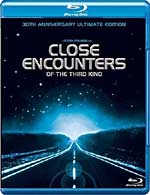 Close Encounters of the Third Kind
Close Encounters of the Third Kind
Movie:  Picture:
Picture:  Sound:
Sound:  Extras:
Extras: 
Close Encounters of the Third Kind is different. It is truly a science fiction movie. It's dazzingly well made. It has all sorts of ideas. And for me, at least, it is remarkably unsatisfying. Why are the aliens putting thoughts -- compulsions, in fact -- in Richard Dreyfuss's head? Did they want him specifically? The small kid played by Cary Guffey is brilliantly rendered, and makes for some fascinating scenes. But why was he taken in the first place?
Too many questions, and not enough answers for my taste.
The video quality of this movie is quite remarkable. Things aren't encouraging at the start. The Columbia Pictures lady logo looked horribly soft and grainy, and this was followed by a stylised rising sun logo with which Columbia was experimenting at the time, that was just as bad. But then the movie started, and in the opening Mexican scene you could have sworn the thing was shot last year, not three decades ago, such was the sharpness, clarity, and evenness of colour and brightness.
That was probably the high point of the video, but rarely did it get much worse than that. Some of the night scenes were a bit softer, due to the low light. But some indoor scenes were obviously shot in bright light and darkened post production, such was the remarkable depth of field. A couple of the night scenes did show noticable film grain in the dark areas, though, as though the film had been underexposed and forced in development. Thus is the transparency of Blu-ray. In short, the picture delivered by this Blu-ray disc is as good a representation of the film as it is possible to deliver.
And the sound? I glanced over someone else's review where he raved about the sound, and in particular the power of the bass. That, I have to say, was a surprise to me. Yes, in a couple of scenes with the spaceships there were some good atmospherics established with significant levels of deep bass, but not truly knock-em-dead powerhouse stuff, nor was there much in the way of infrasonics.
And that's what you would expect from a 1977 movie. In fact, the sound was excellent -- for a 1977 movie. The 'Special Edition' of the movie was released just a few years after the original release, and this version had been transferred over to 70mm film with six track audio, so there was decent material to work from for the surround. So the surround is extensively used, while the dialogue remains clear and coherent. The music design sounds a little dated and the overall sound isn't quite as crisp as a modern digitally recorded sound track, but if that's the sole complaint one can make, that's pretty impressive.
The special extras are overwhelming. The first disc has all three release versions of the movie implemented with seamless branching: the original 135 minute theatrical release from 1977, the 132 minute Special Edition from 1980 and Spielberg's 1997 Director's Cut, which runs to 137 minutes. A 'View From Above' extra uses icons to show how each cut differs from the original. And, then, there's another whole disc of extras that will take you well over three hours to watch.
 (Australian rating); Region Free
(Australian rating); Region Free
The following video bitrate graph for the original version of the movie was generated by BDInfo 0.5.3:

This is the video bitrate graph for the 'Special Edition' version of the movie:
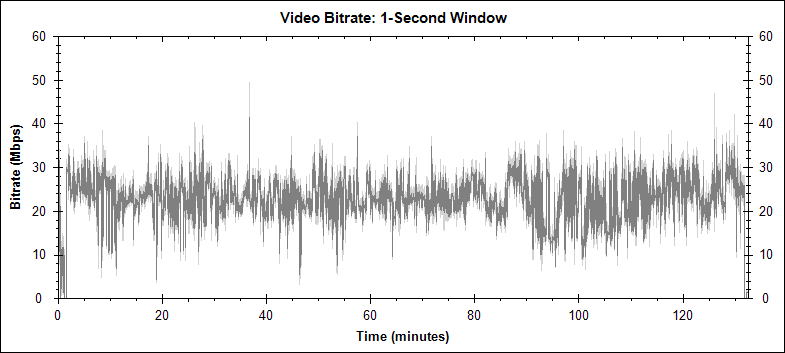
While this is the video bitrate graph for the 'Director's Cut' version:
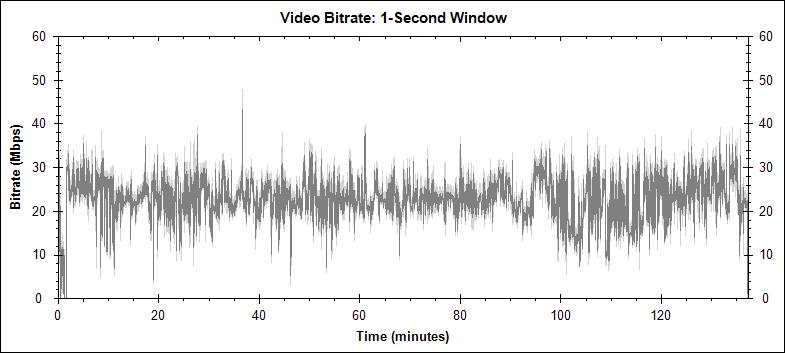
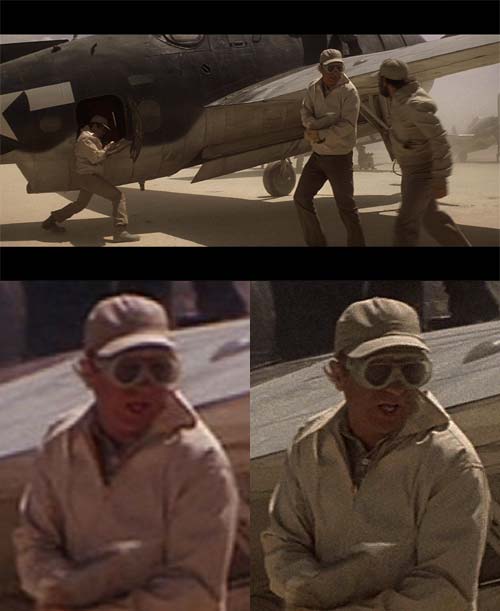
One detail worth noting on this one: on the left the button on the subject's shirt is barely, if at all, identifiable as a button. On the right you can see the button hole. I suspect that the DVD is a softer than usual transfer.

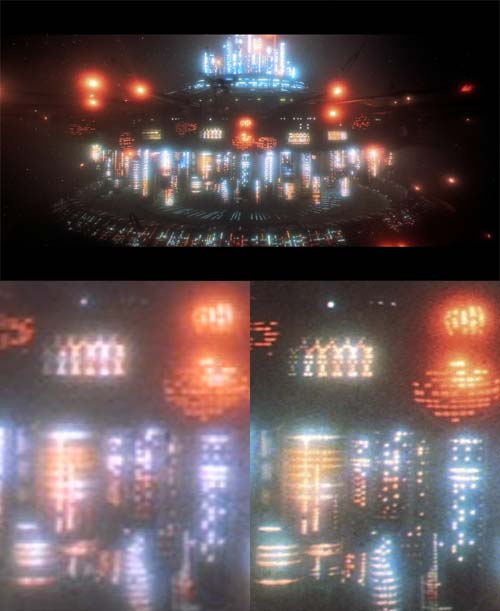
There was a fair bit of film grain in all three of the Blu-ray shots, and none at all evident in the DVD. Whether this was because of low resolution or the use of a different source print is uncertain.